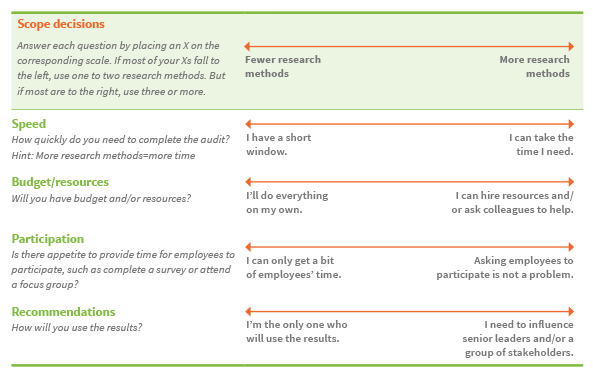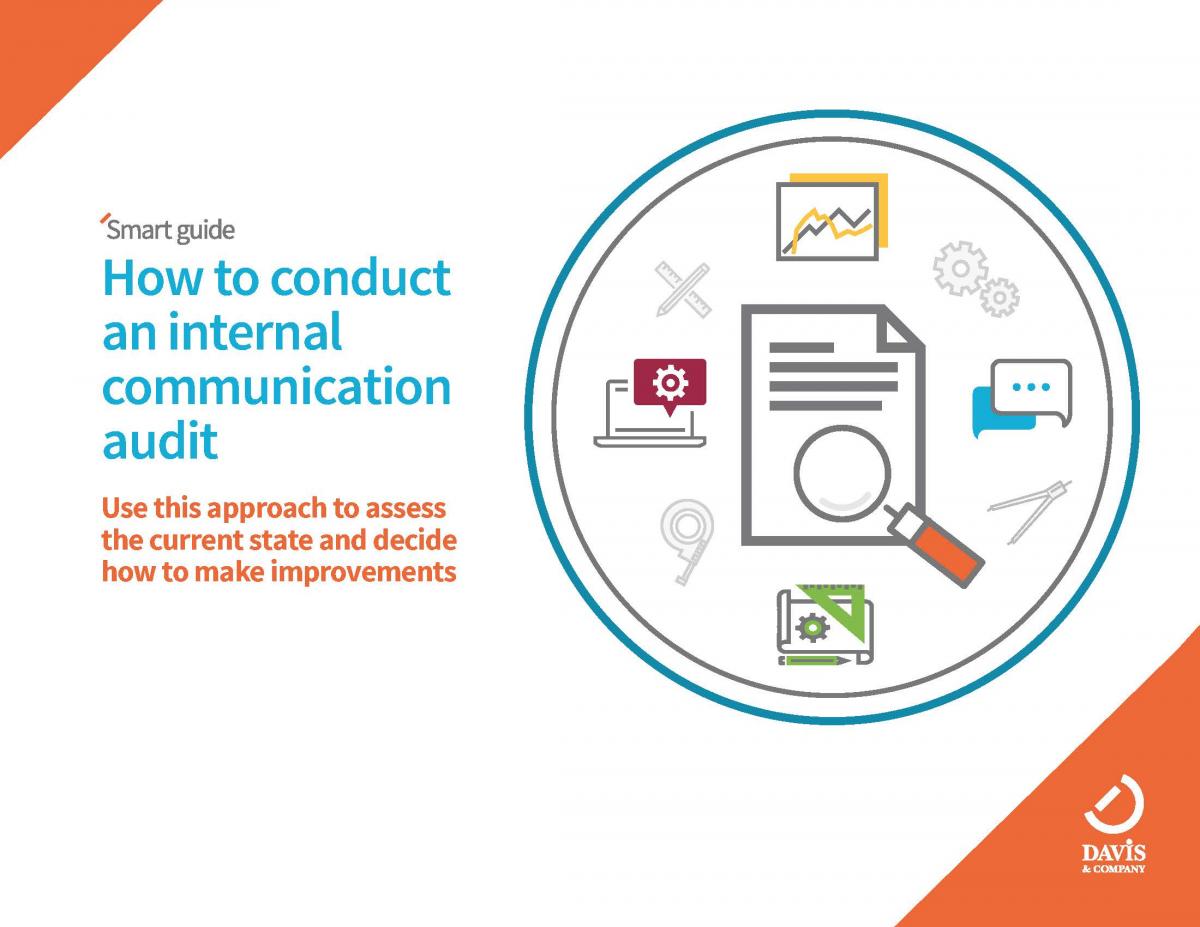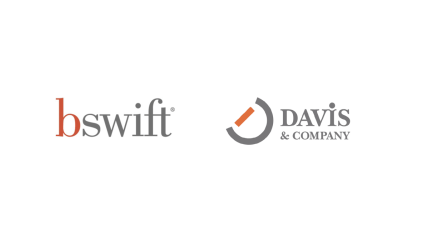
The word “audit” usually conjures images of not-so-friendly tax accountants with calculators at the ready. In the employee communication world, an audit is a useful tool to get a high-level view of how communication is performing. Employee communication audits typically use several research methods to develop a clear picture of strengths and opportunities.
Before you hit the send button on a survey or start interviewing employees, take a step back by determining the scope of your audit and selecting your research methods.
Step 1. Determine scope
There are several factors that influence the mix of research methods that will be part of your audit. After you’ve set objectives, use my decision tool (below) to determine the scope: from a simple study (using a couple of research methods) to a comprehensive assessment (three or more research methods).
Step 2. Select research methods
Now you’re ready to select your research methods. Here’s an at-a-glance view of options:
- Survey
- E-metrics
- Focus groups/interviews
- Channel assessment
- Observation
- Benchmark study
Survey. Surveys are easy to deploy (but drafting questions is tough!) and provide the quantitative data you may need to influence leaders. Keep in mind that surveys won’t give the why behind the data—use focus groups if you need the full story on a topic. Surveys come in many shapes and sizes: from comprehensive (30 to 40 questions) to pulse or spot (five to seven questions).
Use surveys when you want to understand high-level successes and opportunities. Ask employees to evaluate their communication experience, including satisfaction with channels, knowledge of key topics and their attitudes about important issues. Spot or pulse surveys are useful to check the progress of communication, such as knowledge or the performance of a channel.
E-metrics. Digital communication tools generate lots of quantitative data: unique visitors, average visit duration, total page views, etc.
E-metrics are a useful way to understand employee behavior and content preferences. They can also augment qualitative data.
Focus groups and/or interviews. If you find yourself including many open-ended questions in a survey, it’s time for qualitative research. Focus groups and/or interviews will help you explore an issue in depth and gather ideas.
Use qualitative research when you want to understand employees’ needs and preferences, how they use communication and their ideas for improvement.
Channel assessment. When you work with a channel every day, it’s important to get perspective. An assessment can help. How do your channels compare with leading practices, such as grade level of writing, focus on employees, transparency and length?
Run a channel assessment if it’s time to refresh your core channels or take them to the next level.
Observation. It’s one thing to ask employees what they do, but it’s another to watch them in action. For example, you may want to understand how employees use communication tools: Do they pick up the printed newsletter? What happens when they walk by the digital display? How do they navigate the intranet when they need to find specific information? One classic observational technique is the site visit.
Play the role of observer when you want to understand behaviors.
Benchmark study. Like a channel assessment, benchmark studies are a useful way to look at your work differently. Put simply, a benchmark study compares your employee communication program with the approach of companies you admire.
Conduct a benchmark study when you’re looking for inspiration to re-imagine your entire employee communication program.
New to employee communication audits?
Try dipping your toe in the water with this straightforward exercise: Gather all articles published on the intranet during the past six months and group them by topic.
Answer these questions:
- Where are you spending your energy?
- How are the topics aligned with business objectives?
- Do you have too many articles about one topic and not enough about others?
- How do your findings compare with page views?
Then brainstorm changes:
- How could you change your editorial mix?
If you want to take this exercise a step further, add e-metrics to the mix. Which stories get the most attention? Which stories get the least? And, in a focus group, ask employees how they read the articles: skim, review the first paragraph only or read the entire piece? Are there additional topics that should be covered?
Here’s an example
The communication team at an industrial services company knocked on our door to uncover the story behind troubling intranet metrics.
Situation
Every week, the team published a round-up of top intranet stories—an email push to employees. The team was concerned that after the summary was sent, there wasn’t an uptick in article views on the intranet. Members of the team told us, “Something must be wrong with our news digest.”
Research methods and scope
Since the team wanted to make changes quickly, we used a simple audit approach:
- A pulse survey (eight questions) to assess the effectiveness of the weekly email digest
- Two web-based focus groups to dig into the survey results and ask employees for their ideas
Findings, recommendations and next steps
In the survey, employees gave the digest high ratings—they said it:
- Is easy to understand and timely
- Helps them know what’s happening across the company
- Covers topics of interest
The two focus groups provided insight into article views on the intranet. We learned that employees get what they need from the digest and don’t feel compelled to learn more by clicking. Employees also told us that the digest’s format—image, title and short description—is the perfect amount of information because it’s aligned with the time they have available.
Across both research methods, employees provided ideas to take the digest to the next level. For example, employees suggested several ways to increase relevancy—ensuring content is focused on what they need.
In a follow-up workshop with the communication team, we reviewed the results and decided to focus on:
- Improving the content mix; for example, more stories about the industry and business units/regions
- Decreasing word counts (from 500 to 150/200), so less time could be spent drafting articles
Learn more
Want to learn more about employee communication audits? Check out our Smart guide, How to conduct an internal communication audit.
Orginally posted at medium.com





